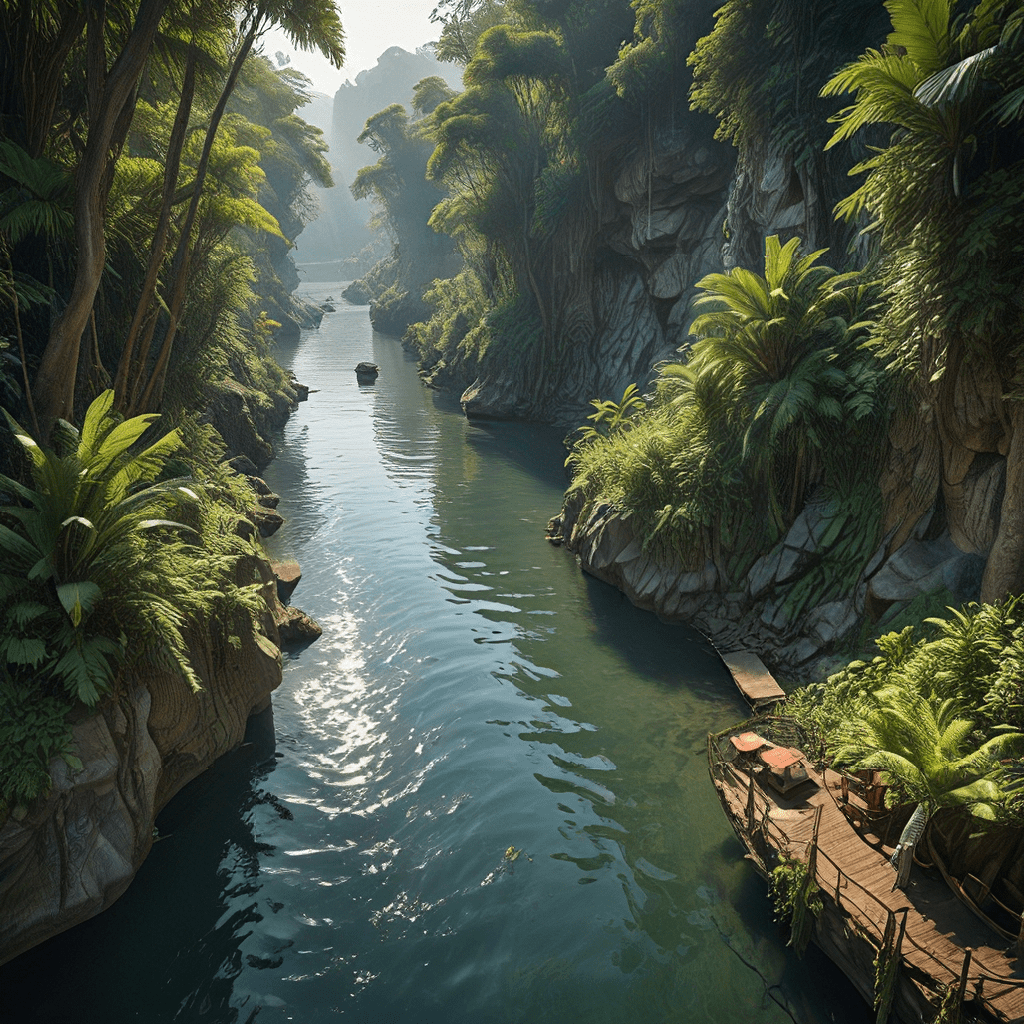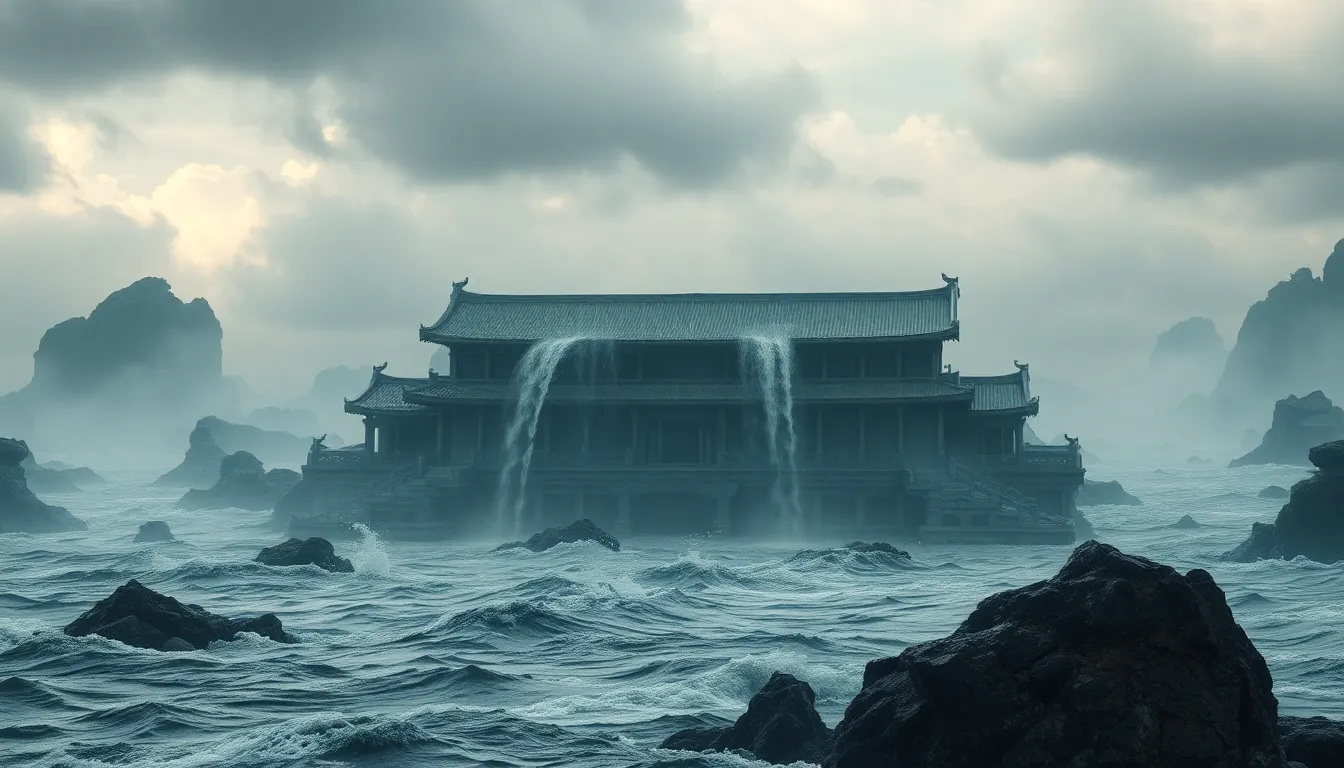Indonesian Legends: The Real-Life Mythical Waterways
Introduction: Navigating the Waters of Myth
Indonesia, an archipelago nation with over 17,000 islands, has a deep and rich cultural connection to its vast waterways. From the tranquil rivers winding through lush jungles to the boundless expanse of the open sea, water has always been a vital source of life, sustenance, and inspiration for Indonesians. This close relationship with water is reflected in the many myths and legends that have been passed down through generations, weaving a tapestry of fantastical tales woven with the threads of spirituality, nature, and human experience.
The Significance of Water in Indonesian Culture
Water plays a crucial role in Indonesian culture, transcending its practical function as a source of life. It is deeply embedded in spirituality, folklore, and daily life. In many traditional beliefs, water is seen as a sacred element, a symbol of purity, fertility, and the divine. The abundance of rivers, lakes, and seas has shaped the Indonesian way of life, influencing their beliefs, rituals, and even their artistic expressions.
Water is not just a physical resource but also a spiritual one. It connects the living and the dead, the earthly realm and the celestial realm. Many myths and legends revolve around the supernatural powers of water, the spirits that inhabit it, and the magical creatures that emerge from its depths. The waters of Indonesia are not just a source of life but also a gateway to the unseen world, a realm of myth and magic.
The Seven Seas and the Realm of the Gods: A Realm of Spirits and Guardians
In Indonesian mythology, the seven seas are not just geographical entities but also represent a spiritual realm teeming with divine beings and powerful spirits. These waters are believed to be guarded by mythical figures, often with connections to the gods and goddesses of the Hindu pantheon.
Each sea is associated with a specific spirit or guardian, each with its own unique characteristics and powers. These spirits are responsible for protecting the seas, ensuring the safety of sailors, and maintaining the balance of nature.
The River of Souls: The Journey After Death in Indonesian Mythology
Death in Indonesian folklore is not an end but a transition, a journey to the afterlife. Many myths and legends depict the soul's passage through a mythical river, a celestial waterway that separates the world of the living from the realm of the dead. This river, known as the "Sungai Arwah" (River of Souls) in some traditions, represents the final stage of the soul's journey.
The journey across the River of Souls is not always straightforward. The soul is often faced with challenges and obstacles, judged by spirits who decide their fate in the afterlife. The concept of the River of Souls highlights the importance of spiritual purity and ethical conduct during life, as these factors determine one's passage into the afterlife.
The Serpent of the Sea: Naga, the Guardian of the Waters
One of the most iconic mythical creatures in Indonesian folklore is the Naga, a giant serpent that inhabits the seas. The Naga, often associated with water deities and powerful spirits, is portrayed as a powerful guardian of the ocean.
The Naga is not solely a fearsome creature but also a symbol of wisdom, prosperity, and spiritual power. It is often depicted as a benevolent protector, safeguarding the seas and aiding those who respect its power. In some stories, the Naga is associated with the ancient kingdoms and dynasties of Indonesia, serving as a symbol of their power and influence.
The Magic Boat That Sails the Skies: Exploring the Supernatural Vessels
In the world of Indonesian mythology, the boundaries between the earthly and the celestial are often blurred. This is particularly evident in the stories of magical boats that sail the skies, transcending the limitations of ordinary vessels. These supernatural boats, often crafted from mystical materials and imbued with divine powers, are symbols of human ambition, the yearning to conquer the unknown, and the belief in the boundless possibilities of the spiritual realm.
These celestial boats are often associated with deities and powerful spirits, embodying their divine attributes and serving as vehicles for their travels. The boats are often described as being adorned with intricate carvings, shimmering with celestial light, and powered by mythical creatures or supernatural forces. They are not just vessels of transportation but also symbols of spiritual power and divine intervention, capable of navigating the realms beyond human understanding.
Theories on the Origins of Waterway Myths: The Influence of Nature and History
The rich tapestry of Indonesian waterway myths is not simply products of imagination but reflects the profound influence of the natural environment and historical experiences.
The archipelago's vast expanse of water is a major factor in shaping these legends. The awe-inspiring power of the sea, the unpredictable nature of weather, and the mystery of the deep have spurred generations of Indonesians to create narratives that attempt to explain the world around them. The fear and respect for the natural world, combined with the desire to understand its mysteries, have given birth to tales of powerful spirits, mythical creatures, and divine interventions.
The historical context of Indonesian civilization also plays a crucial role. The maritime history of Indonesia, with its long-standing tradition of seafaring and trade, has woven itself into the fabric of these myths. Tales of seafaring adventures, encounters with mythical creatures, and the struggle for survival at sea have been passed down through generations, shaping the collective understanding of the role of water in Indonesian culture.
The Role of Waterway Myths in Indonesian Literature: From Folk Tales to Modern Works
Indonesian waterway myths have long been a source of inspiration for its rich literary tradition. From ancient folktales and epics to modern novels and poems, these myths have captivated the imaginations of generations of writers, providing them with a rich tapestry of themes, characters, and settings.
Folk tales, often passed down orally, are filled with stories of mythical creatures, magical journeys, and the struggles of ordinary people against supernatural forces. These tales often feature the sea as a backdrop, serving as a symbol of mystery, danger, and the unknown. They also highlight the importance of navigating the complexities of human relationships, societal hierarchies, and the challenges of life.
The influence of waterway myths can also be seen in the works of modern Indonesian writers, who often draw inspiration from these legends to explore contemporary themes of identity, social change, and the search for meaning in a rapidly changing world.
The Enduring Legacy of Waterway Myths: Their Impact on Indonesian Identity and Culture
Indonesian waterway myths have left a lasting impact on the country's cultural identity. They provide insights into the values, beliefs, and aspirations of the Indonesian people. These myths are not just fictional tales but reflect the deep connection that Indonesians have with their natural environment and their reverence for the supernatural world.
The enduring legacy of these stories can be seen in the various aspects of Indonesian culture. They are woven into traditional arts and crafts, reflected in rituals and ceremonies, and celebrated in festivals and celebrations. They continue to inspire artists, writers, and musicians, ensuring that the spirit of these myths remains alive and vibrant.
The influence of these myths extends beyond the cultural realm. They have also shaped the nation's political landscape, serving as symbols of national unity and resilience. The shared history of navigating the vast waters of the archipelago has fostered a sense of collective identity, a shared understanding of the challenges and triumphs of a nation born from the sea.
FAQ:
Q: What are some of the most popular Indonesian waterway myths?
A: Some of the most popular Indonesian waterway myths include:
The story of Nyi Roro Kidul, the Queen of the Southern Sea, a powerful spirit who rules over the Indian Ocean and is both feared and revered.
The tale of the Naga, a giant serpent that inhabits the seas, often serving as a guardian of the ocean and a symbol of wisdom and prosperity.
The legend of the magical boats that sail the skies, symbolizing human ambition and the boundless possibilities of the spiritual realm.
- The myth of the River of Souls, which represents the passage of the soul into the afterlife and the importance of spiritual purity and ethical conduct.
Q: How do waterway myths impact Indonesian society today?
A: Indonesian waterway myths continue to play a significant role in shaping the country's cultural identity and values. They influence the nation's arts, literature, and traditions. They also serve as a reminder of the importance of respecting the natural environment and honoring the spiritual world.
Q: Are Indonesian waterway myths still believed today?
A: While some may view these myths as mere folklore, many Indonesians still hold deep reverence for these stories and the spiritual world they represent. These myths continue to influence belief systems and practices, reminding people of the interconnectedness of humanity, nature, and the supernatural world.


